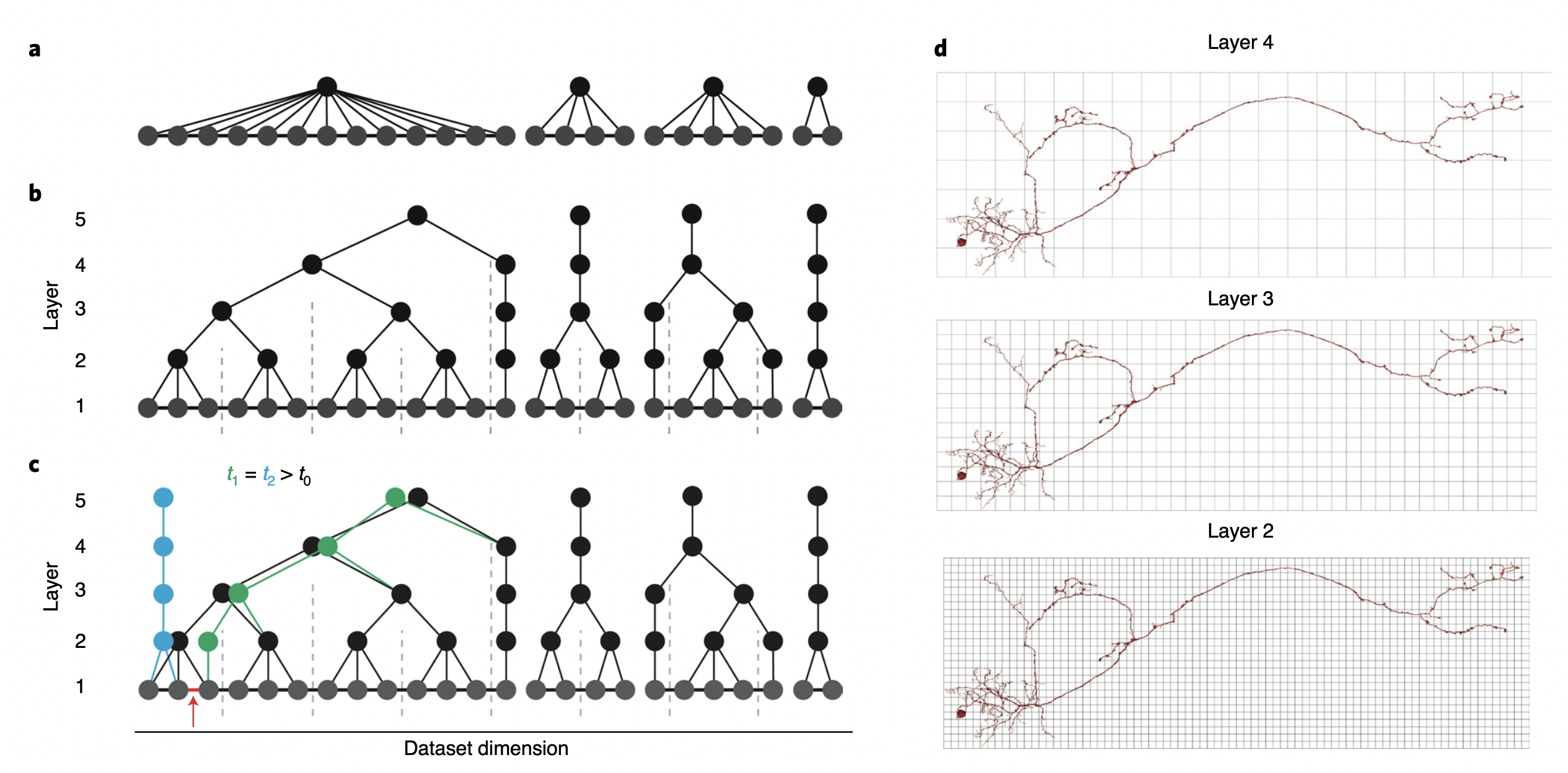ChunkedGraph
The chunkedgraph is a dynamic oct-tree connected components supervoxel graph.

A visual representation of an oct-tree (Wikipedia (WhiteTimberwolf) CC BY-SA 3.0)
As with any oct-tree, it is organized in hierarchical levels, with the bottom level 1 corresponding to the supervoxels of the segmentations, and the top level being the unique connected components of the supervoxel graph.

A figure illustrating the spatial chunking and editing of a the chunkedgraph. From Dorkenwald et. al 2021
The ChunkedGraph client allows one to interact with the ChunkedGraph service,
which stores and updates the supervoxel agglomeration graph. This is
most often useful for looking up an object root id of a supervoxel or
looking up supervoxels belonging to a root id. The ChunkedGraph client
is at client.chunkedgraph.
Look up a supervoxel
Usually in Neuroglancer, one never notices supervoxel ids, but they are
important for programmatic work. In order to look up the root id for a
location in space, one needs to use the supervoxel segmentation to get
the associated supervoxel id. The ChunkedGraph client makes this easy
using the get_root_id() method.
sv_id = 104200755619042523
client.chunkedgraph.get_root_id(supervoxel_id=sv_id)
However, as proofreading occurs, the root id that a supervoxel belongs to can change. By default, this function returns the current state, however one can also provide a UTC timestamp to get the root id at a particular moment in history. This can be useful for reproducible analysis. Note below that the root id for the same supervoxel is different than it is now.
import datetime
# I looked up the UTC POSIX timestamp from a day in early 2019.
timestamp = datetime.datetime.utcfromtimestamp(1546595253)
sv_id = 104200755619042523
client.chunkedgraph.get_root_id(supervoxel_id=sv_id, timestamp=timestamp)
If you are doing this across lots of supervoxels (or any nodes)
then you can do it more efficently in one request with
get_roots()
node_ids = [104200755619042523, 104200755619042524,104200755619042525]
root_ids = client.chunkedgraph.get_roots(node_ids)
Getting supervoxels for a root id
A root id is associated with a particular agglomeration of supervoxels,
which can be found with the get_leaves() method. A new root id is
generated for every new change in the chunkedgraph, so time stamps do
not apply.
root_id = 648518346349541252
client.chunkedgraph.get_leaves(root_id)
You can also query the chunkedgraph not all the way to the bottom, using the stop_layer option
root_id = 648518346349541252
client.chunkedgraph.get_leaves(root_id,stop_layer=2)
This will get all the level 2 IDs for this root, which correspond to the lowest chunk of the heirachy.
An analogous option exists for get_roots().
This is useful to help find nodes to query within the Level 2 Cache, amongst other things.
Other functions
There are a variety of other interesting functions to explore in the ChunkedGraphClientV1